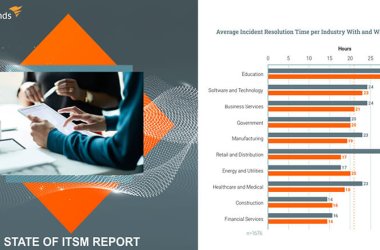
Pundits have been talking digital transformation to death for at least five years. A few businesses have actually embraced this opportunity with gusto, pulling ahead of competitors or disrupting markets outright.
Most enterprises, however, especially those most risk-averse, haven’t made a lot of changes. Measuring digital transformation progress is tricky, but I’d argue there’s a bellwether KPI for engineers and executives alike: the adoption, then explosion of container technology within existing IT organisations.
Enter containerisation — a tool for achieving real transformation bringing increased simplicity, consistency, modularity, and portability to production environments, thereby translating into faster IT delivery and increased quality. Container technology arms the business with new agility that could see it rapidly respond to a changing customer need, jump on an emerging revenue stream, or test a new market, all by increasing the speed at which an organisation can provide end user services. According to 451 Research, this is a market that could equate to as much as $2.7 billion by 2020.
The airport experience, for example, is an excellent example of customer experience determined by IT processes. You’ve probably noticed that very few of the steps in the check-in process are defined by security or logistical needs. Human input steps seem scattered throughout and have been a frustrating aspect of airline operations for a long time. To truly automate this customer journey, making it possible for people to come to the airport and smoothly find their gate uninterrupted, would mean deconstructing many of the systems powering check-in. That’s why digital transformation is hard — you must be willing to break the technology stack you’ve always had. That means adopting loosely-coupled services, horizontal distribution, cloud-native services, containers, microservices, and much more. In the airline example, thin margins, previous multi-year project timelines, and untested human factors all add up to risk and fear.
Yet for companies who consider innovative customer experiences a competitive advantage, transforming legacy infrastructure and monolithic architectures helps them escape organisational stasis. Often, containers are the building blocks for digital, especially the first mile. According to SolarWinds IT Trends Report 2018, almost half of surveyed IT professionals (49%) ranked containers as one of their most important technology priorities, a significant jump in adoption when compared to the report from the previous year, in which just 15% of surveyed IT professionals planned to develop containerisation skills in the year ahead.
Containers are a common artefact of monolithic architecture deconstruction, minimally a least painful option to decouple services and accelerate transformation. In the IT industry, we tend to cling to reassuring feeds-and-speeds details, like webpage delivery latency. Instead, we should be looking at business goals like increasing average checkout basket values by 10%. Embedding live sales metrics in the same dashboards reporting CPU percentage, IOPS, and the like lets you maintain a connection between operations and business. It allows you to both reassure the c–suite that risk is low, while you adopt new techniques like CI/CD, fail-fast, cloud-native services, FaaS, PaaS, and more. Monitoring the business, not just IT, is the key to giving the business what it impossibly demands: transformation and safety.
There are those who insist that true digital transformation may only be delivered by DevOps teams or specialist contractors. They say that the changes it demands are too difficult for entrenched IT. But what they forget is what we see in the IT Trends report — IT isn’t having significant issues with new technologies like containers and orchestration. Instead, existing teams, when given a little time, pick up new approaches like containers, learn their idiosyncrasies versus virtual machines, and keep them humming alongside existing applications. Perhaps it goes to the greatest misunderstanding between leadership and engineering: that IT needs to be more proactive. IT has never needed to be told this. We just need tools, better communication, and a little slack.




